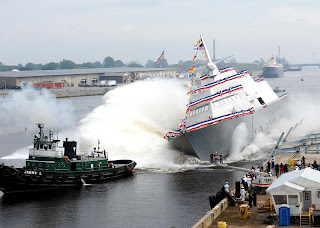As Rough As It May Seem,It's Still Steady As You Go...
Chinese ships navigate Somalia’s waters
A bombed ship in Berbera. |
China’s navy announced plans to send at least three ships to Somalia to protect Chinese vessels from rampant piracy.
About 20 percent of the 1,265 Chinese ships that have passed through the Gulf of Aden this year have reportedly come under attack.
Bright Simons is an executive at the African nonprofit IMANI Center for Policy and Education. He writes at citizen journalism portal OhMyNews about China’s role in Somalia and the Asian country’s naval ambitions.
China, Somalia: Devil and the Deep Blue Sea
China’s He Yafei, second in command of the Asian Giant’s diplomatic corps, told the United Nations Security Council at a December 16th session on the Somali piracy crisis that Beijing may authorize an expeditionary naval force to the Gulf of Aden.
Two issues arise from this statement for observers of China’s foreign policy.
Firstly, it provides another piece in the puzzle of China’s blue water naval ambitions, by affirming the much suspected link between seafaring commerce and open ocean warfare in the minds of Admiral Liu Huaqing’s disciples at the top of the PLAN (People’s Liberation Army’s Navy).
Secondly, it projects Africa into the heart of China’s geopolitical ambitions by offering the possibility that the emergent world power might use the continent as a sounding board for the much anticipated blue water strategy.
The second point is much vindicated in the context of the historical situation in the Straits of Malacca, where China’s participation in regional anti-piracy efforts has been less than aggressive. Singapore, Indonesia, and Malaysia, and also Japan, whose trade is highly dependent on quietude in the Straits, have constantly had to look up to the USA for strategic backup in the event things get out of hand.
So, then, the question on everybody’s lips is: given the relative sanguinity China has shown about threats in its own backyard, why is the PLAN pushing the pliant Foreign Service into a blue water scheme off the shores of Africa?
To attempt to answer that question, one must first explore into a bit more detail the concept of blue-water geopolitics.
Not many countries can effectively, like the U.S. of today and the USSR of yesterday, circulate battle stations around the planet by relying on a Navy with truly global reach.
The United States can at a moment notice dispatch an ‘Aircraft Carrier Group’ to nearly any naval theater anywhere on the planet in a few days or weeks at most. The group will usually consist of the Aircraft carrier itself, a floating hangar cum runway from which some 100 fighter jets may be maintained and supplied in a continuous aerial tactical scenario, and a couple of frigates and destroyers backed by amphibious special force units and perhaps a splattering of submarines.
Frigates and destroyers are great for protecting and supplying expeditionary forces as well as for pummeling the coastlines of enemy states. Like all battle cruisers, a few ballistic missiles in the mix make these perfect launching pads for broad-front attacks as well as for surgical maneuvers, involving amphibious vessels and tactical squadrons.
Simply put, if China wants to be in a position where it can clamp down on a full-blown civil war in the Sudan, for instance, and prevents such from imperiling its energy security interests it will need a blue water navy.
Got To Be A Simple Solution: Too much at Stake?
How about some world coordinated effort. All ships have or should have satellite tracking. World coordinated convoy shadowing. Do we need to really trade with African countries through the use of ships? Unforunately yes!
Does the lack of any navy in more than 20 African costal countries help? No, but Russia would love to build another bargain basement 350 frigates for these nations. Even Canada would have a go at this.
Stop sinking the old ships. Retro 30 year old ships can still knock a punch along with their marines on board, even a sea harrier at the back.
Only the Northern African nations of Algeria,Eygpt, Libria, Morocco, Tunisia along with South Africa can assume any capabilities to shadow assigned ships and shipping lanes.
There may have to be armoured shipping convoys created. But only time will tell if 28 of the most powerful nations with a navy want to play their cards such as China is doing.
Along with the media heap of Russia coming to the rescue with a diplomatic ballad of force there really is no one other than the "good olde USA" to come to the rescue. Diplomacy has to be reunited and maintained with all. Tough sailing ahead for sure.


















